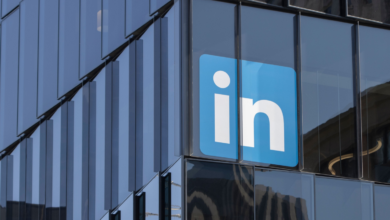10 Creative Infographics & Why They Work [With Examples]
![10 Creative Infographics & Why They Work [With Examples]](https://altwhed.com/wp-content/uploads/2023/01/10-Creative-Infographics-Why-They-Work-With-Examples-780x470.png)
Infographics are now common in marketing strategies. In fact, 45% of marketers are already using this medium, and 38% plan to use it for the first time in 2022.
However, despite their many benefits—increasing engagement on social media, for example—infographics aren’t used as much as they might be for marketing.
This may be due to lack of marketing team designers or insufficient ability to design or promote campaigns using infographics (reserving them for specific strategies).
Despite the challenges of creating them, I’m a firm believer that infographics are worth the effort.
Not only will your brand stand out from the norm in feeds, but you’ll also better convey your brand’s messages and values with the power of design.
Infographics help establish your brand as industry experts and can improve your visibility in multimedia searches, drive high-quality links, and drive new customers.
Check out the 10 benefits of infographics below and inspire yourself with examples of infographics done right.
1. Give the appropriate dimension to the size of the data
Numbers alone do not carry weight in plain text.
This infographic from D’Efilippo uses wartime poppies to represent the number of people killed in wars since the 20th century.
Hosted on a standalone website, the user scrolls down to an interactive infographic, which can zoom in at specific intervals to visualize conflicts separately.
This type of design leaves a greater impression on the audience than the actual volume of data and its consequences.
- Example: poppy field By Valentina DiFilippo.
Corporate inspiration
Businesses can inspire themselves with this Poppy Field to create interactive, data-driven infographics, allowing potential customers to fully understand the impact of their work.
For example, a manufacturer could design a graph of its supply chain in a similar vein, either representing its growth through history or as data points scattered around the world on an interactive map.
By turning your data into an interactive asset, you increase engagement and aid the learning process through a “hands-on” experience.
2. Engage in visual storytelling
In this one, Trobaugh designs a “B2B sandwich” to showcase all the inventions by industries that make your lunch perfect.
By highlighting the invention behind each component, the infographic achieves its goal of proving just how important B2B companies are to the modern-day elements we take for granted.
- Example: B2B sandwich by Scott Trubaugh.
Corporate inspiration
Think of a metaphor/analogy to convey the benefits of your brand.
In this way, you make it easier for the reader to understand the topic.
Since the sandwich is such a familiar meal, it serves as a gateway to the rest of the copy, which details B2B inventions and their origins.
3. Segmentation of scientific data
The data is compelling in its own right, but it pushes your point better when paired with the illustrations.
In this infographic, 13 data-backed reasons why make a compelling case for the effectiveness of this medium.
The icons and copy are clear, which makes it shareable and a great example of branding by the studio.
- Example: 13 scientific reasons why you like infographics by NeoMam Studios.
Corporate inspiration
Turn lists into infographics whenever possible, as they stimulate engagement.
This type of content works wonders on social media and can be shared by salespeople to start conversations with leads.
4. Impact Engine with (Deliberate) Complexity
This infographic looks like it came straight out of the Where’s Waldo book – which is why it’s perfect.
It may be a lot, but it represents the complexity of book publishing, clearly describing all of the steps taken to get a book to hit the shelves.
By following the arrows in the design, it’s easy to understand everything – and to admire the efforts that book publishers put into it.
Simplicity is often described as the best practice for engagement, but sometimes, impressing your reader with unique images is exactly what will make your infographic stand out from the mundane in its feed.
Therefore, if you are tackling a complex topic, consider creating a complex infographic that will engage your readers from start to finish.
- Example: How to make books at Webcrafters Inc By Funnel Incorporated.
Corporate inspiration
Most businesses, especially B2B, have a complex production process that would work well in this format.
By showing how your product is made, you prove the effort it takes and the value of your service.
5. Learn the 101s in a few minutes
This infographic features a breakdown of the most popular programming languages for beginners, including SQL, Java, PHP, and C++.
It’s a great asset to students and people tapping into this market, with conclusion to additional learning resources.
- Example: The beginning of the code By WhoIsHostingThis?
Corporate inspiration
Demonstrate authority by teaching industry newcomers with an easy-to-share infographic.
Content 101 works in any market, and this infographic is perfect for social media ads, as well as SEO content to drive awareness.
6. Showcase your product
In this infographic, Tower Electric Bikes illustrates the safest places to ride in America with a simple system of color and registration.
In this way, the brand takes a stance towards bike-friendly city planning, but also promotes its product as an option for people who share that belief. It’s a smart example of branding content through education.
- Example: The Most and Least Bike-Friendly Cities in America By Tower Electric Bikes.
Corporate inspiration
Use the research to support your position and how your product is part of a solution to a social problem.
When people see your product as good for the “bigger picture,” it helps your CSR goals and boosts brand awareness.
7. Tap on “Pop Culture”
Digit promoted this chart with “The Cost of Good Time” according to four songs of different genres (rap, pop, rock, and country) to show how spending varies based on lifestyle.
Through pop references, Digit demonstrates the value of money and the different cost of a “good time” (from $323 to over $1 billion) in four popular songs—a perfect way to promote your budget and investment app.
- Example: Lyrical good time by Digit.
Corporate inspiration
Make your products relatable by associating them with popular culture references or trends. This sparks familiarity and makes your infographic more attractive.
Just be careful not to take advantage of Gen Z pop culture without doing your homework or taking a risk “fellow kids” meme.
8. Show how things work from the inside
Most people have no clue what’s going on under the hood of a car, so why not show how it works in an infographic?
This animated design breaks down a car’s engine into its parts, showing how oil, fuel, pistons, and more move a car.
It even has a short section at the end that explains hybrid cars.
- Example: How does a car engine work by Animagraffs.
Corporate inspiration
Show how your products work “under the hood” and drive engagement by teaching the complexity behind your operations.
It’s benefit #4 on this list, but unlike the complex book publishing graphic, the engine’s complexity boils down to easy-to-understand animations.
9. Provide an easy-to-digest report
To showcase the top findings of their report with 3,000 IT and entrepreneurs, data management platform Veeam designed this infographic with easy-to-view data and quirky illustrations.
Presenting the key findings in this way, with a link at the bottom to the full report, makes it more shareable on social media and a prime draw for drawing attention towards this industry specific research.
Without the infographic, Veeam wouldn’t have this palatable gateway to what might otherwise be dry (but crucial) data.
- Example: 2022 the most important trends in data protection by Veeam.
Corporate inspiration
Pair your quarterly/annual business reports with charts to make them shareable on social media.
This boosts engagement since social media channels prioritize images over plain text. It also “promotes” the data to get the reader to download the full report for the entire story.
10. Inspiration and a call to action
PlanGrid created this infographic showing how mobile apps are increasing productivity in an effort to digitize the construction industry.
The drawing follows this format:
- the problem (Productivity has declined in the last 57 years).
- the solution (Scope of uses for mobile apps).
- social proof (Statistics of technology-based contracting companies).
This planner inspires action, in a format well known by the public and a call to action at the end to visit the PlanGrid website for mobile business apps.
- Example: Build the future with mobile construction apps by PlanGrid.
Corporate inspiration
Follow the “problem, solution, social proof” format in your infographic to showcase your products and make potential customers aware of their problems.
Social proof finally seals the deal, proving your products to be trustworthy with statements or testimonials.
This is a great nurturing cadence infographic, as it can warm up leads to your offers and even provide an opportunity for a quick sales call.
The final takeaway
Based on these 10 examples, each with its own key feature, here are some quick points for companies who want to include infographics in their content strategy:
Complex subjects are ideal for infographics
Are you working on a complex topic that would take pages of copy to fully explain?
An infographic can facilitate comprehension, using images to guide the reader through the data for better understanding.
When you’re writing content and notice it’s getting complex, consider contacting the design team briefly.
It will make the topic easier to understand.
Don’t create “old” designs.
Many of the designs here, such as Examples #4 and #8, make clever use of images to grab attention and guide the reader through the content.
If your infographics goal is to increase engagement, the best approach is to go beyond the ordinary and post designs that stand out from the competition.
Create long graphs
Most of the infographics on this list aren’t afraid to go far, diving as deep as it takes to get their message across.
Don’t worry about low engagement due to long content; If the design is good and the information is insightful, it will hook the reader to the end.
Take example #3, with 13 scientific reasons why graphs interact.
None of the data conflict with the in-depth content, and the infographic itself is an example of an attractive long-form asset.
Explore topics your audience can identify with
Finally, popular culture, metaphors, and trends are components that make your infographic more engaging.
These themes are icebreakers, as they engage your audience with something they know before introducing the unknown.
Therefore, whenever possible, try to explore popular topics in your infographics.
Just be diligent about maintaining a brand image when doing so, and choose directions carefully.
More resources:
- 10 great ways infographics benefit your content strategy
- 7 types of content that gain the most engagement and links
- Completely optimized content from start to finish
Featured image: Unitone Vector / Shutterstock




